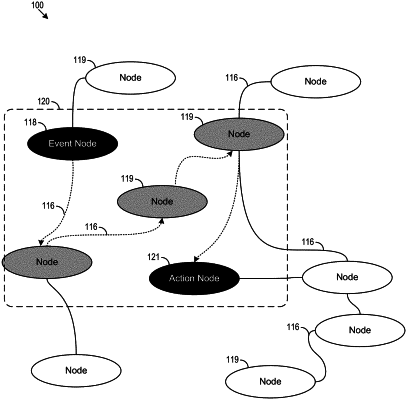| CPC G06N 5/02 (2013.01) [G06F 9/542 (2013.01); G06F 18/211 (2023.01); G06F 18/22 (2023.01); G06F 18/251 (2023.01); G06F 18/29 (2023.01)] | 20 Claims |

|
1. A method including:
at an input layer of an event stack receiving event data associated with an event;
at a knowledge layer of the event stack;
accessing the event data from the input layer; and
adding an event node to a knowledge layout based on attributes of the event detailed within the event data, the event node representative of the event;
at a selection layer of the event stack:
accessing the event data from the input layer;
parsing the event data to determine event phrases;
based on the event phrases, obtaining a selection of an action to create an event-action node pair, the action having an existing action node on the knowledge layout;
at a meta-graph layer of the event stack:
identifying, using a path creation algorithm, a first path and a second path from the event to the action on the knowledge layout;
traversing the knowledge layout from the event to the action over the first path and the second path;
merging the second path and into the first path based on two traversals of a specific node along the second path, the first path traversing the specific node once, the first path identical to the second path except for a portion between the two traversals of the specific node;
at a validation layer of the event stack and after merging, presenting the first path on a display interface for validation;
at a scoring layer of the event stack:
assigning a score to the first path based on the validation;
determining a rank for the first path relative to a third path based on the score;
generating a recommendation to respond to the event using the action based on the rank; and
causing a presentation of the recommendation on the display interface.
|